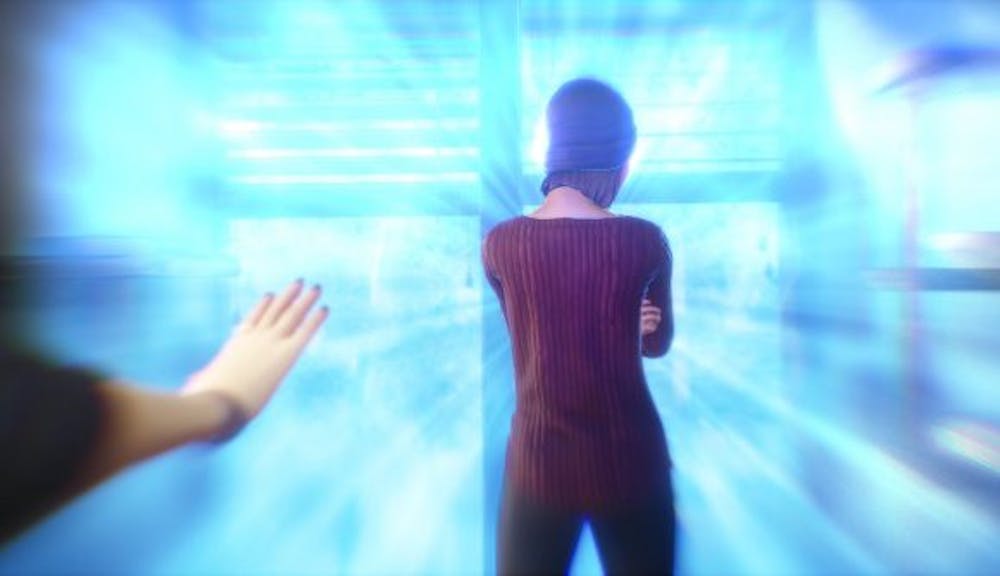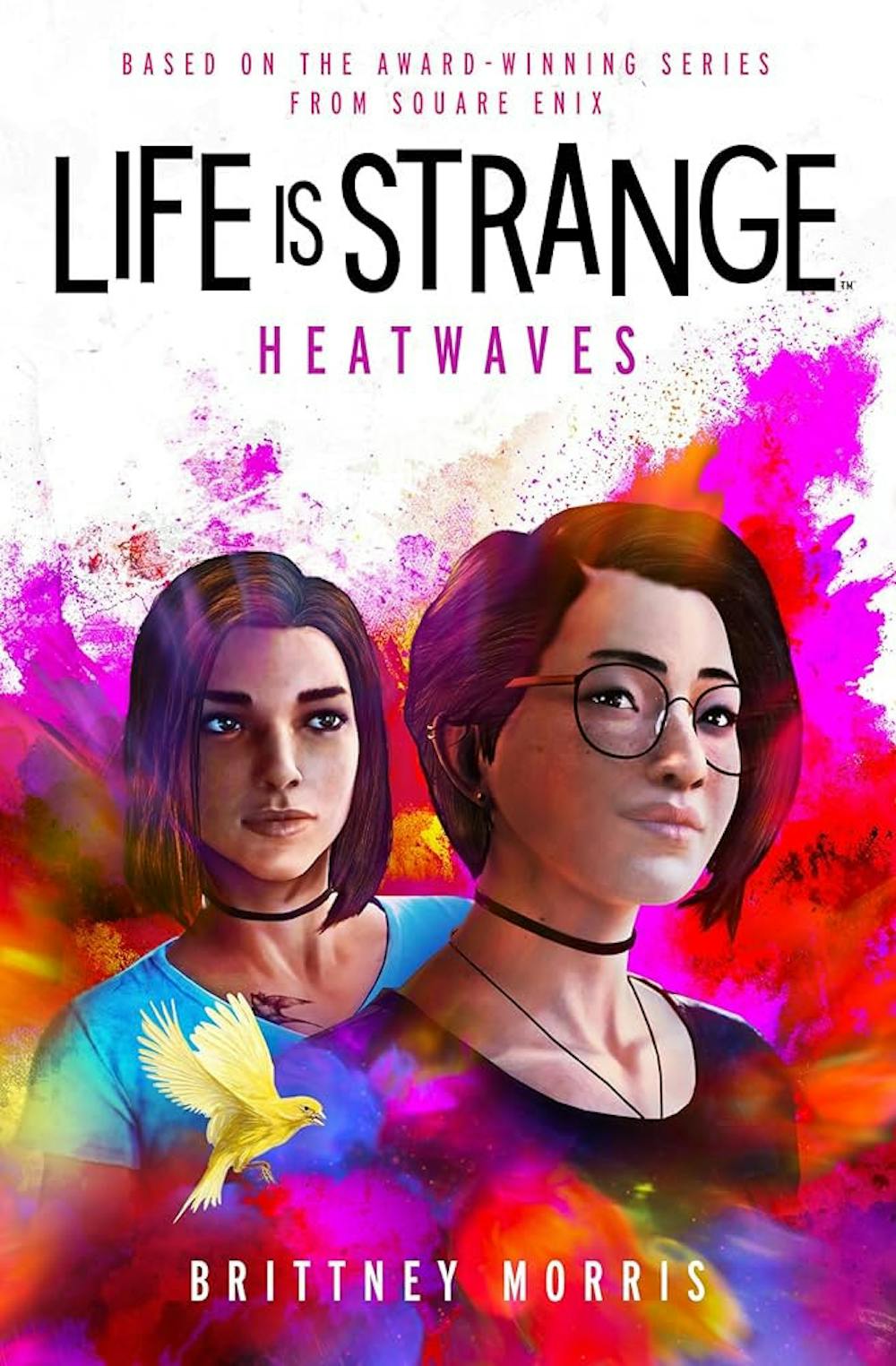The opinions and views expressed in this article are those of the author and do not reflect the opinion of Byte or Byte’s editorial board.
"This action will have consequences…"
This is the infamous warning—the reminder—that occurs throughout each game of the Life is Strange franchise. Often, it is accompanied by a flapping butterfly, a spiral, two wolves, an Eye of Providence, or even an oil lantern. Symbols corresponding to the tale being told, a path being woven. That one simple line evokes a powerful fear and anxiety within the player, because it is true to life. Each action we make is permanent and alters the course of our lives’ trajectories. It makes these seemingly simple and almost childish appearing games hold weight as the players navigate the stories.
Make a choice. Alter the path. Change the lives around you. Reach the end.
Life is Strange: Heatwaves is the most recent novel in a growing line of tie-in media based on the original story of the franchise's video game. The novel was written by Brittney Morris—a nominee for the NAACP Image Award and winner of the ALA Black Caucus Youth Literary Award for her novel The Cost of Knowing—in collaboration with Life is Strange franchise owner, Square Enix. Though her work goes beyond novels, Morris has worked on popular games such as Marvel’s Spider-Man 2, Subnautica: Below Zero, and soon-to-come Marvel’s Wolverine.
Life is Strange: Heatwaves is a love letter to the franchise it heralds from, but fails to fully recapture the fanfare of the story it is continuing. Brittney Morris clearly respects and cares for the franchise, but caters to a constricted page count and fans who have history with the franchise.
Taking place after one of several endings from the game, Heatwaves, released July 30, 2024, follows Life is Strange: True Colors’ protagonist Alex Chen (Erika Mori) as she leaves the small town of Haven Springs, traveling the road with Steph Gingrich (Katy Bentz). The pair are traveling to play at a music festival when their car breaks down in the small farming town of Barbazal. Alex and Steph soon find themselves engrossed in a political scandal that is destroying the drought stricken small town, and they seek to help.
Droughts, Politicians, and Theme Parks, Oh My!
In Life is Strange: True Colors—and every other game within the franchise—players have the ability to make choices which alter the course of their gaming experience, ranging from minor changes to drastic ones. One player might choose a cup of coffee over a cup of tea and now a side character has died. Another might choose to dance to a song rather than play video games and now they have begun a romance. The Butterfly Effect: the beat of a butterfly’s wings on one side of the world may cause the formation of a hurricane on the opposite side. It is the key principle to the functionality of each Life is Strange game, offering great replayability and variety between players. However, a novel is not interactive. A reader cannot change the outcome or choice a character makes. It simply tells a story. With a franchise that has multiple endings dependent on the choices made by the players, how does a novel act as a sequel? Simple: disclaimers. And from there, the author writes the characters based upon what choices they feel best for their variation of the characters.

Taken from GaymingMagazine
In Heatwaves, Morris follows the ending in which Alex and Steph decide to leave Haven Springs in search of adventure and a life filled with music. They are together, an adorably goofy sapphic pair. What adventures befall them, they face head on, arm in arm. The story Morris crafts for the pair is Life is Strange wackiness at its finest, interwoven and intermingled with deep set emotion. I love the franchise and I really enjoyed this novel, though I had wished it were longer than the 250 pages I was given. The story has a slow build-up, getting readers reacquainted with the characters. Then it takes the time to inform the readers about the small, drought wrought town of Barbazal and the major players who will obviously come to influence the story. By the time a lot of the major pieces of the overarching plot occur for the first time, almost half the book has passed. Finally, the story really begins to pick up its pace, throwing the characters and the readers around like balls in a pinball machine. For almost half of the novel, Steph is trying to get both herself and Alex to leave as soon as possible so they can make their appointment for the Lamplighter festival. Alex, of course, decides to meddle with the town’s problems and use her powers in an attempt to fix them. She toys with people’s emotions, using them as gateways to learn information to help. What starts as a story about political maneuvers to extort money from the small town by taking away their water eventually—and insanely—turns into a story about a corrupt mayor seeking to turn the town into a theme park. Yes, a theme park.
Though I do not care much for politics, I was intrigued to see if the story I was presented would be a commentary of politics within our real world. I wanted to know what Morris had to say and how it would tie into the threads of Life is Strange, but I can’t be too upset. I got what I paid for: the novel was a Life is Strange story. It makes almost no sense when looking at the nitty gritty fine details, but is a fun and enjoyable ride when viewing from afar. I don’t mind that. I just wish that the novel was longer. I would have loved to see more of Steph and Alex figuring out what they are to each other and what their plans are for the future. At the same time, I wish the stakes were higher. By the end, everyone who could be deemed “good” got what they wanted and the bad guys lost.
This Action Will Have Consequences…
A key point I continue to bring up is this theme of choices and consequences. How one small, seemingly-insignificant action can be the catalyst that changes something major in the future. And in this novel, that is still prevalent, though not to the extent I would have liked.
In Life is Strange: True Colors, Alex traverses the pain of losing a sibling while learning to open up to the people of Haven Springs. Using her powers, she reads peoples’ emotions and uses that knowledge of insight to solve the mystery of why and how her brother had passed—but doing so has its costs. The information she gets from diving into a person’s emotions is not meant for her: it is personal. Not only that, but at several points throughout the game, she can choose to dull/take away a person’s emotions. In doing so, the person is left lifeless, like a zombie. By the end of the game, Alex has grown. She has made friends with many of the residents of Haven Springs and she is learning to move on. In Heatwaves, Morris tries to continue this pattern. In the novel, Alex feels shy and worried, anxious and thinking often of her brother again. What was supposed to feel like the continued progression of the character felt like a restart back to the beginning. This was made even more prevalent through some of the choices Alex made within the story. Even though she knew the dangers and terror of even touching the dial of someone’s emotions, she proceeded to do so again. Not just once, but twice. From that choice to ignore reason and the knowledge she has—which is brought up several times in the novel—chaos ensues. It almost costs the lives of herself, Steph, and many residents of the town. All I could think as I was reading was: where did the Alex Chen I knew go?

Image from PCGamesN
Probably the opposite direction Steph went. Unlike a return to basics that had occurred with Alex, Morris manages to capture the essence of what made Steph enjoyable in the games she appeared in. She is snarky, dorky, goofy, kind, and caring. She wants the best for people and she would give up everything she owned to do so. She is silently selfless. And in this story, that continues. We start the novel by being introduced to her goofy antics and over time, as Alex leads the charge to try and fix something she has no reason to fix, she is willing to help. Of course, she doesn’t just sit idle—at least, not the entire time—she acts as a voice of reason for Alex. Where Alex is brash and unthinking, Steph prompts her to take a beat and come up with a strategy. It sometimes worked. However, the biggest crime Morris placed with Steph was that she didn’t utilize the character for most of the novel. Every major plot beat that occurred was navigated and course-corrected by Alex’s hands. Steph just acted as an information pamphlet. The one scene where she took action was negated by being told what to do.
Where Morris’s character work shined, though, was in the townspeople of Barbazal. Each character felt full of life and backstory. They felt real. From the owner of the flower shop to the mayor and his daughters. Each one was distinct and identifiable from the others. The best example of this can be seen with the character of Opal, one of the mayor’s twelve daughters. She is a complex character who appears sweet and kind, yet as the characters and the readers learn more, it is revealed that she has a past riddled with sorrow and death. Not everything is answered about her and that’s how it should be. Her character is minor to the overall story, but in fleshing her out in such a way, the small town feels alive.
Trapped, Alone, Yet Burdened by The Past
Heatwaves, unfortunately, faces a problem. A big problem. And it isn’t a small town facing a politician-made drought. It’s problem is that it doesn’t let go of the past. As tie-in material to a popular franchise, this is to be expected. I mean, how can it continue the story of the characters without talking a bit about their past and the things that happened previously for them? But therein lies the problem. Morris understands Life is Strange and has a keen knowledge and care for the stories told with these characters. She sprinkles seeds of callbacks throughout, nudging the readers who played the game. Yet, she doesn’t explain anything about them for the reader. It is like a fan-favorite character suddenly appearing in the middle of a show or film without explanation beyond just catering to a fanbase. While this may work for Marvel, here it doesn’t. Some of the points Morris calls back to had a direct influence the story of the game and have major implications for the story of the novel.
For some, this novel may be their introduction to the Life is Strange franchise, but Morris doesn’t take them into account. Heatwaves is written by a fan of the franchise for fans of the franchise, and anyone else is pushed to the side, relegated to searching Google for answers. In doing so, it dooms potential prospects for new players of the games old and new.
Life is Strange, But At Least We’re Together
Life is Strange: Heatwaves is a love letter to the franchise it heralds from, but fails to fully recapture the fanfare of the story it is continuing. Brittney Morris clearly respects and cares for the franchise, but caters to a constricted page count and fans who have history with the franchise. The novel provides highs and lows, but I think the car ran out of oil along the way.

Sources: SquareEnixGames, PenguinRandomHouse, BrittanyMorris, SimonAndSchuster, InsomniacGames, Subnautica.com, InsomniacGames, SquareEnixGames, IMDb, IMDb
Photos: PenguinRandomHouse, GaymingMagazine, PCGamesN
Contact Aaron Picklesimer with comments at ampicklesimer@bsu.edu





The Daily News welcomes thoughtful discussion on all of our stories, but please keep comments civil and on-topic. Read our full guidelines here.